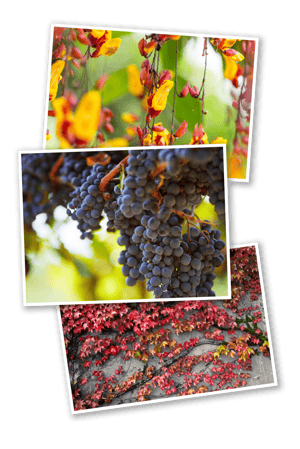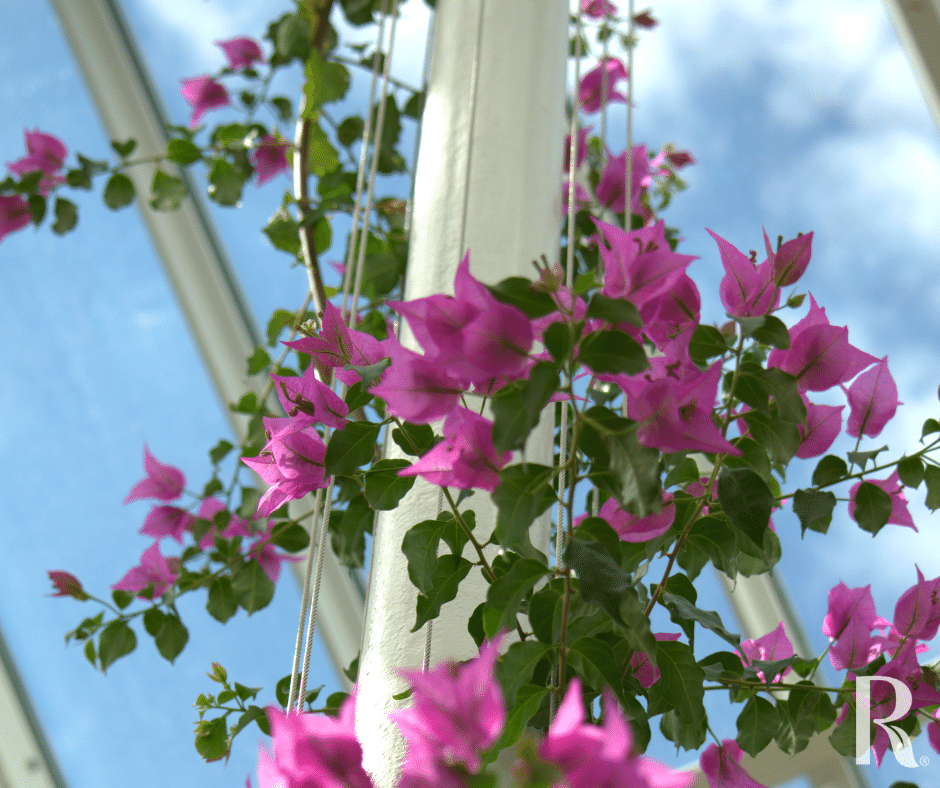Climbing plants can add a whole new dimension to a garden whether it be ornamental, functional, greening or edible.
Functional aspects of climbers.
With the ever-shrinking backyard and high-density urban living, climbing plants are finding themselves on trend and playing a niche role within the world of vertical gardens, green walls, and roof top gardens. Climbing plants will happily fit in where large trees and shrubs may not and where big root systems may be of a concern.
Climbers can also act as a screen to block out views. Create a sun block providing shade and cooling. Plus, give you that much needed ‘seeing green’ biophilic design aspect.
 Ornamental: Flowering climbers will add colour and possibly scent, plus brighten dull fences, pergolas, pots with trellises and even hanging baskets. There are a number of flowering climber choices around, some even have coloured foliage such as the Boston Ivy and Virginia creeper. For scent you can’t go past Jasmines, Beaumontia and Stephanotis.
Ornamental: Flowering climbers will add colour and possibly scent, plus brighten dull fences, pergolas, pots with trellises and even hanging baskets. There are a number of flowering climber choices around, some even have coloured foliage such as the Boston Ivy and Virginia creeper. For scent you can’t go past Jasmines, Beaumontia and Stephanotis.
Flower choices: Bougainvillea, Pyrostegia ‘Orange Trumpet Vine’, Mandevilla, Petrea ‘Purple Wreath Vine’, Combretum indicum ‘Rangoon Creeper’, Pseudocalyma ‘Garlic Vine’, Clerodendrum species, Jasmine species, Beaumontia ‘Angels Trumpet Vine’, Thunbergia mysorensis ‘Lady Slipper Vine’, Dipladenia cultivars, Allamanda cultivars, Stephanotis floribunda, Clytostoma.
Edible: There are quite a few climbing plants that have edible fruit, or for shorter lived edibles you can look to Beans, climbing Zucchini ‘Tromobochino’, Cucamelons, Chokos, Passionfruit, Grapes, Kiwi Fruit, Perennial Beans, and Dragon Fruit.
Native choices: Milletia, Parsonia, Pandorea, Billbergia, Cissus Antarctica, Hibbertia Scandens, Hardenbergia violacea, Jasminum species, Tecomanthe hillii ‘Fraser Island Creeper’, Kennedia species, Billardiera scandens, Hoya Australis.
Deciduous choices: Grapes, Parthenocissus species ‘Boston Ivy’ and ‘Virginia Creeper’, climbing Roses, Wisteria species, Chonemopha Fragrans ‘Climbing Frangipani’.
And that’s just the tip of the iceberg.
Looking for more great gardening info like this? Subscribe to the Better Earth Program to receive Better Earth Secrets Magazine direct to your inbox each season.
_MEB.png?width=842&height=596&name=RP_HorizontalColour(R)_MEB.png)



